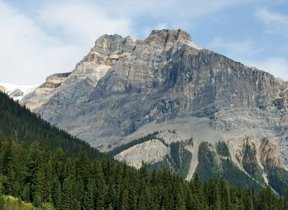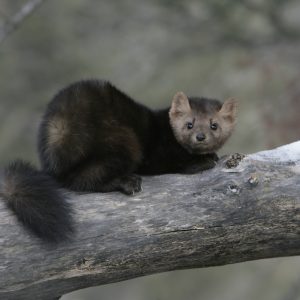The Bighorn Sheep: Majestic and Memorable
With its set of bulky spiralled horns, this iconic animal is easily one of Canada’s most recognizable.
There are two subspecies of the bighorn – Californiana (California Bighorn Sheep) and Canadensis (Rocky Mountain Bighorn Sheep).
Where do they live?
 In Canada, the Bighorn Sheep is found in scattered parts of southern British Columbia and more prolifically in western Alberta, in the Canadian Rockies. Their range continues down into the American Rockies, and they can be found as far south as Mexico’s Baja Peninsula.
In Canada, the Bighorn Sheep is found in scattered parts of southern British Columbia and more prolifically in western Alberta, in the Canadian Rockies. Their range continues down into the American Rockies, and they can be found as far south as Mexico’s Baja Peninsula.
The bighorn’s ideal environment has a dry climate and is rugged with areas plentiful of low grasses and herbs. Herds will often migrate long distances in the winter to areas with minimal snowfall.
There are just over 3,000 Bighorn Sheep in British Columbia, and the population there is considered vulnerable in part due to human encroachment on their habitats. In Alberta, however, where the mammal is the official provincial mammal, the Bighorn Sheep is considered secure, with more than 11,000 inhabiting its national parks and provincial lands, representing over 15% of the Bighorn Sheep population in North America.
What do they look like?
The bighorn is about one and a half times larger than a domestic sheep. An adult Rocky Mountain Bighorn Sheep is typically between 1.5 to 1.8 meters tall and can weigh between approximately 50 and 130 kilogrammes.
Males (rams) are characterized by their enormous horns, but females (ewes) also have horns, albeit noticeably smaller and less curved.
Bighorns have coarse coats, which range from a rich brown with white at the hooves and muzzle, to a greyish brown, depending on the time of year.
What do they eat?
Bighorn Sheep are herbivores, meaning they only eat plants. Grasses, herbs, shrubs, and other low-lying plants are suitable for foraging. Throughout the year and depending on their location, they enjoy grasses such as fescue and bluebunch wheatgrass and herbs like balsam root and lupine. When their favourite plants are not available, they will sometimes eat conifers. Bighorn Sheep also enjoy mineral or salt licks.
What is their nature?
Bighorn Sheep are quite social and roam in packs ranging from five to twenty. Typically herds are segregated between bachelor males and females with the young. Groups have a defined social hierarchy and power structure. The size of a ram, and the size of his horns, determines his stature within the group. Males will fight to preserve or assert their dominance or to win over a mate.
Fun facts
- Scientists can tell the age of a bighorn by the number of necklines on its horns.
- A ram’s horns alone can weigh more than the combined weight of other parts of his body.
- Bighorns have extremely keen eyesight—they can perceive movement over one kilometre away!
Acknowledgements: Alberta Environment and Parks, Alberta Government, BC Ministry of Environment, Lands and Parks, Hinterland Who’s Who, and National Geographic.



